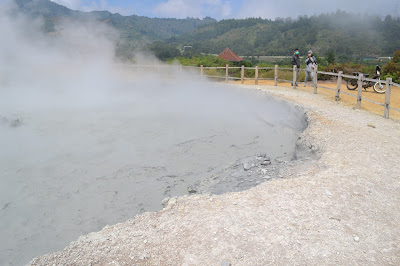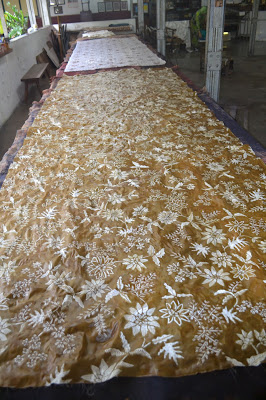Malioboro
If you want a full culture shock of Indonesia, the city to visit is
Yogyakarta. It is a city filled with culture and traditions; from the buildings
to the public transportation to the stores and simply just the people. There’s
just soo much soak in when you’re there. The city is of course filled with
tourists so many people there seemed to speak or simply just understand English.
And of course I checked out all of the tourist locations and more.
One area is called Malioboro. It’s an area filled with stores
where you can buy traditional cloths and lots and lots of souvenirs. And you
can bargain your price (if you know how to) and get it cheaper. They will for
sure mark the price up once they know that you’re a foreigner. If I wasn’t slow
at figuring out what the numbers meant I
would’ve had a chance at bargaining… but the numbers are all in the thousands and
it gets confusing between thousand and ten thousands. Anyway, Maliaboro is a
lot of fun to visit; it’s a long street with lots of stuff to buy.
Batik
Just like many South East Asian countries, Indonesia is also
famous for its Batik clothes. And the city in which Batik is famous is Yogyakarta.
I got a chance to check out one of the batik factories. You would think it’s
filled with machines making these awesome designs. But all of the batik is
handmade, including the waxing, painting and the final products.
The work is divided into four groups of people.
1) The artist: who comes up with a specific design
that he/she wants to makes. He/she then pencils the designs onto the long white
cloth.
2)
The waxing women: they use a wax pencil to
outline the artist’s pencil work. It’s a very delicate and time consuming job.
3)
The Colouring people: once the wax dries up the
following people remove the wax and add colour to the white cloth. They also
add sequence or paint, depending on what the design needs.
4)
The Colour changer: There is a huge pot and when
I say huge, I mean like taller and wider than me huge. The pot has different colours
where they soak the white cloth in.
And yes, these awesome names are made up by me. I think they
should officially be called by these names.
The artist can also be replaced by pre-made stamps with
designs. Check out the picture and imagine how hard it would be to do the
waxing on some of them. And how much patient one will need to do this.


















































